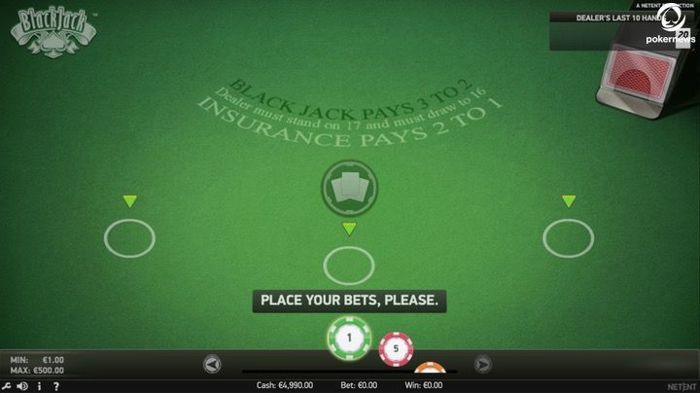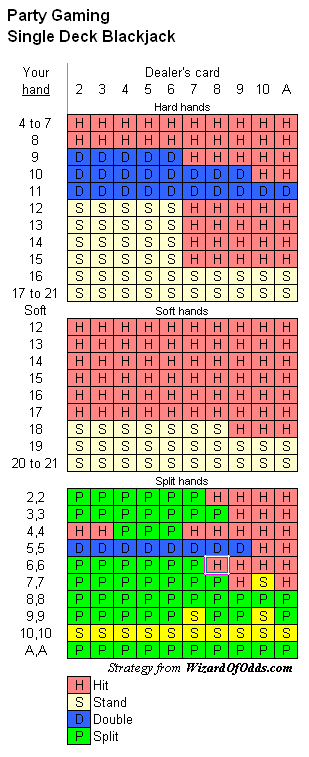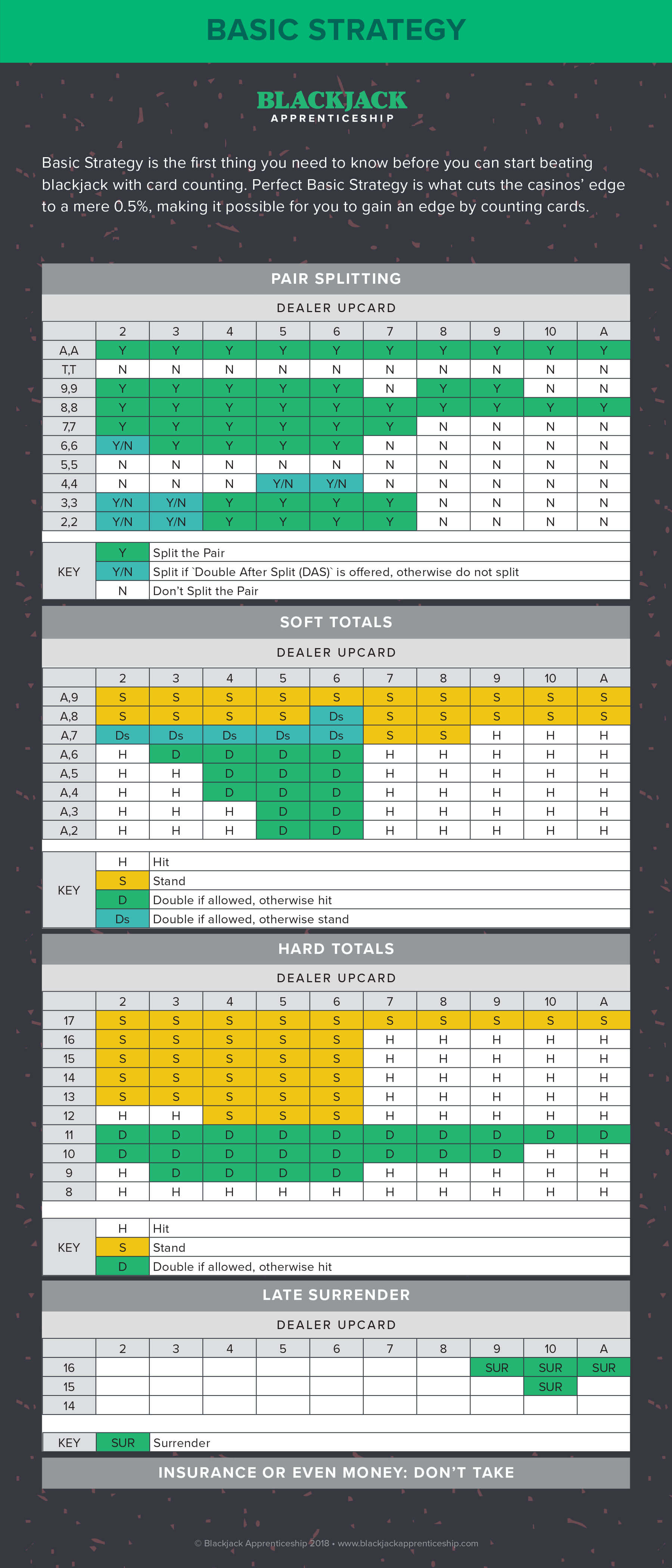Blackjack Strategy 2 Deck
- Appendices
- Miscellaneous
- External Links
On This Page
Many casinos today pay blackjacks at less than 3:2 at some tables; for instance, single-deck blackjack tables often pay 6:5 for a blackjack instead of 3:2. Blackjack games almost always provide a side bet called insurance, which may be played when dealer's upcard is an ace. Additional side bets, such as 'Dealer Match' which pays when the player. Single Deck Blackjack Strategy. With a single deck, early surrender and all of these other rules allowed, the player would actually enjoy about a 1% advantage over the house when playing with perfect strategy. Of course, casinos never offer tables that favor the player or tell them how to win with blackjack strategy cards. EXAMPLES OF HOW TO USE THE BLACKJACK BASIC STRATEGY. Single-deck game with hard 17, you hold 16, dealer’s upcard is a 10. You should surrender. Double-deck game with soft 17, you hold 15, dealer’s upcard is an ace. You should hit (surrender only against dealer’s 10). Six-deck game with soft 17, you hold 16, dealer’s upcard is a 9.

Introduction
To use the basic strategy, look up your hand along the left vertical edge and the dealer's up card along the top. In both cases an A stands for ace. From top to bottom are the hard totals, soft totals, and splittable hands. There are two charts depending on whether the dealer hits or stands on soft 17.
Other basic strategy rules.
- Never take insurance or 'even money.'
- If there is no row for splitting (fives and tens), then look up your hand as a hard total (10 or 20).
- If you can't split because of a limit on re-splitting, then look up your hand as a hard total, except aces. In the extremely unlikely event you have a pair of aces you can't re-split and drawing to split aces is allowed, then double against a 5 or 6, otherwise hit.
Ideally, the basic strategy shows the play which, on average, will result in the greatest win or the least loss per initial hand played. The way I usually go about this is to look at the initial 2-card hands only. Generally, this will result in the overall best play. However, soft 18 against a dealer ace when the dealer stands on soft 17 provides the only known exception that I am aware of for any number of decks. As my blackjack appendix 9 shows, a 2-card soft 18 vs A has an expected value of hitting of -0.100359, and of standing -0.100502. So with two cards it is very slightly better to hit. However, not all soft 18's are composed of two cards. The more the cards in the player's hand the more the odds favor standing. Simulations show that if forced to always hit or always stand, it is better to stand. I would like to thank Don Schlesinger for bringing this unusual play to my attention.
Written by:Michael Shackleford
Arguably my favorite game – I use a simplified method to count cards, make sure to have a notepad or something similar up while playing, also, ALWAYS choose the seat last to act. If that seat is not available, wait until it is. We want to MAXIMIZE our edge. You should also find a casino that offers good rakeback and bonuses, which Stake has far and beyond the most lucrative deals in both
Here is my method:
Step 1: Assign A Value To Every Card
Double Deck Blackjack Tips
With Hi-Lo, the most common card counting system, the card values are as follows:

- 2-6 = +1
- 7-9 = 0
- 10-Ace= -1
As each card is dealt, you will either add 1, subtract 1, or do nothing based on each card’s value.
Step 2: The Running Count
Keep A Running Count By Adding Or Subtracting Every Card That You See In Each Shoe.
As each card is dealt, we will update our “running count” with the new information we are given.
EXAMPLE #1: The running count for this round is 0 (zero).
EXAMPLE #2: The running count for this round is +1
EXAMPLE #3: The running count for this round is +1.
A card counter does this for each card that comes out of the shoe: card after card and round after round until the dealer shuffles the cards again. Back in the days of single deck blackjack, this information would have been enough to start betting accordingly. If the running count increases, the advantage begins shifting to the player. If the running count goes negative, the casino’s advantage increases.
Step 3: Calculate A “True Count” Or Count Per Deck
In an attempt to thwart card counters, casinos began using multiple decks. Nice try, Casinos! To use our running count in a multiple deck game, we simply have to translate our information into a “True Count” or count per deck. We’ll break down each step below.
Having a +5 running count with 6 decks remaining is a completely different scenario from having a +5 running count with only 1 deck remaining. In the first instance, there is less than 1 additional high card per deck remaining so the player doesn’t have the advantage yet. It’s not just the number of extra high cards that matters to a card counter; it’s the concentration of high cards compared to the concentration of low cards.
So if you had that running count of 5 with only 1 deck remaining, we know that there are 5 extra 10’s and Aces in the remaining 52 cards, which puts the edge in the hands of the player! That’s why the “True Count” is so valuable.
EXAMPLE #1: If our Running Count is 10 and we have 5 decks remaining, our True Count is 2. (10 ÷ 5)

Double Deck Blackjack Strategy Chart
EXAMPLE #2: If our Running Count is -7 and we have 2 decks remaining, our True Count is -3. (-7 ÷ 2)
When using perfect basic strategy and card counting, we are able to use this information to bet according to our advantage. That’s how we card counters make our money! The true count will also inform us of when to change our playing strategy. We call these “playing deviations”
Step 4: Change Your Bets As The True Count Rises And Falls
Keeping a running count and a true count are essential to knowing when the house edge flips in favor of the player, but if you don’t use that information to change how you play, you’ll just be playing a mentally exhausting game of blackjack. In order to capitalize on the information you get from counting, you have to raise your bets as the true count rises. You want to bet really big when the cards favor the player and really small when the count is negative or neutral and doesn’t favor the player. Bankroll management and proper betting strategy can get complicated, and it’s easy to cause a lot of damage to your bankroll if you don’t properly understand how to bet. This article gives a good overview of the things involved: